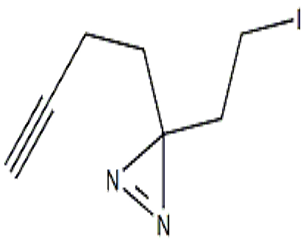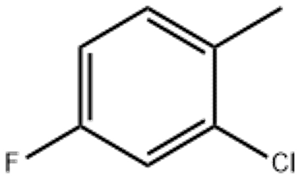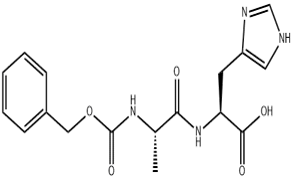1 1 1-Trifluoro-3-iodopropane(CAS# 460-37-7)
| Hazard Symbols | Xi – Irritant |
| Risk Codes | 36/37/38 – Irritating to eyes, respiratory system and skin. |
| Safety Description | S26 – In case of contact with eyes, rinse immediately with plenty of water and seek medical advice. S36/37/39 – Wear suitable protective clothing, gloves and eye/face protection. S24/25 – Avoid contact with skin and eyes. |
| WGK Germany | 3 |
| HS Code | 29037990 |
| Hazard Note | Irritant/Light Sensitive |
| Hazard Class | IRRITANT |
Introduction
1-iodo-3,3,3-trifluoropropane is an organic compound with the chemical formula CF3CH2CH2I. The following is a description of its nature, use, formulation and safety information:
Nature:
1-iodo-3,3,3-trifluoropropane is a colorless liquid with a strong pungent odor. It is denser, has a melting point of -70°C and a boiling point of 65°C. The compound is insoluble in water, but can be dissolved in organic solvents such as ethanol, ether and acetic acid.
Use:
1-iodo-3,3,3-trifluoropropane is commonly used as a refrigerant, gas propellant and pharmaceutical intermediate. It has low temperature performance and high shock stability, and is often used in the synthesis of low temperature reaction conditions. In addition, it is also commonly used in the iodination reaction in organic synthesis.
Preparation Method:
1-iodo-3,3,3-trifluoropropane can be obtained by reacting 3,3,3-trifluoropropane with hydrogen iodide. The reaction is carried out under heating or irradiation with ultraviolet light, usually under an inert atmosphere to increase the yield.
Safety Information:
1-iodo-3,3,3-trifluoropropane is an organic solvent, which is irritating and flammable. In use and storage should pay attention to fire and explosion prevention measures, and ensure good ventilation. Avoid contact with strong oxidants and strong acids to avoid dangerous reactions. Wear appropriate personal protective equipment such as gloves, goggles and protective clothing during handling. Immediate irrigation or medical help should be sought if skin contact or inhalation is desired. When handling this compound, follow the correct laboratory practices and follow the relevant safety instructions.





![6aH-Cyclohepta[a]naphthalene(CAS#231-56-1)](https://www.xinchem.com/uploads/6aH-Cycloheptaanaphthalene.gif)


